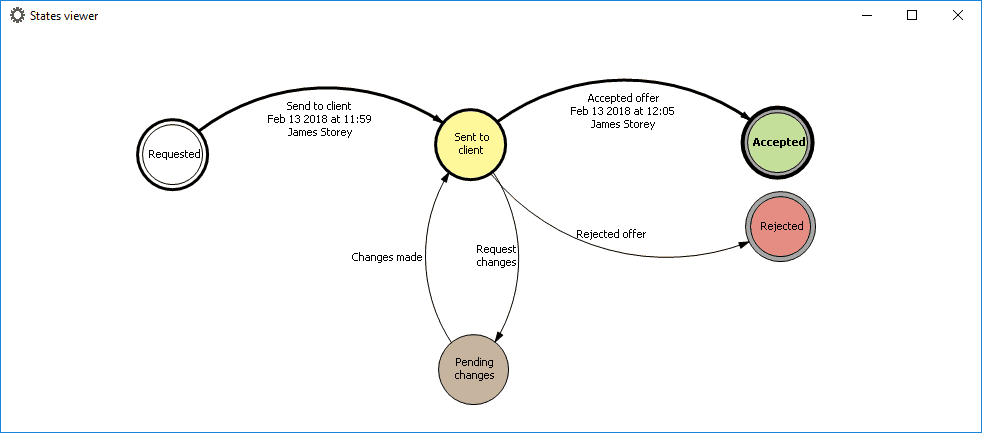
What is ECM Software? – Enterprise Content Management
At university I had a professor who used to say that The job of computer scientists is to take simple things, give them complicated names and sell them more expensively. Well, today I am going to try to explain what ECM Software is in a way that everyone can understand, and without raising the price.
But if you already know the theory, you can try our ECM Software for free for 30 days right now.
What is ECM Software?
Let’s get down to business. An Enterprise Content Management (ECM) Software is a tool designed to organise content, automate processes and manage business information quickly and efficiently. ECMs are an evolution of traditional Document Managements.
10 key functions that ECM Software can do for you
Now that you know what ECM means, it is time to find out what functionalities this type of software has, to see if it is the tool that your team really needs.
1. Organise all tasks
We are talking about having a section of the programme where you can have them in a list and where everyone can go to look for them. For example, the management of commercial offers in a button, the holiday requests of employees in another button or the signing of contracts in another button (these three are just examples, there are infinite).
2. Store files related to a task together and share them with internal or external people.
Beyond the typical folder system, (which it also has) you can link files to a specific task, create a web portal where your customers or suppliers can upload and download files securely. You can also create download links in the style of other tools such as WeTransfer, YouSendIT or HighTail, but maintaining control of the links created, which is very useful in view of the RGPD.
3. Create a “sheet” or record with the most important fields for each type of task.
You decide what these fields are (client name, department, date of submission, etc.). This sheet can be edited, changed or deleted as needed, as you do for example with a mobile contact. You can also alter the sheet at any time to add or remove fields. The system stores a database of these sheets. The technical name for these fields is Metadata.
4. Google-style search by any of the fields in the previous sheet
As I said, you can search by any field in the previous sheet to locate a task quickly as you would search a web page in Google, for example “Offer Accepted Contoso 2021” should bring up all the accepted offers of the client “Contoso” created in the year 2021.
5. Allow people responsible for the same task to have a better way of collaboration than email.
This is very much like a social network. Basically, just as you comment on Facebook or Twitter about a post, the ECM software will let you create comments and alerts about a task for other users to read on mobile or in the ECM Software itself. In addition, they will be alerted by email or with a new notification alert. For example, Peter has left you a message on task X.
6. Define the steps of a task with all its variants using a simple graphical scheme.
This is technically called Document Management, Process Management or Workflow.
I often use this simile: If a friend asks you in a bar how you work and you have a napkin and a pen at hand, you draw a simple sketch of the steps you follow in your team about what happens when you move forward and the possible options.
Well, the ECM software lets you create that drawing, and more importantly, it makes sure that the steps you draw are followed! That is, when you work with the ECM software in front of you creating offers, if the first step is “Offer in creation”, you create the offer in Word. When you have finished you click a button and the ECM program changes the status of that task and sets it to “Offer ready for review”. It is much easier to see it than to tell it.
7. Notify each person in the team when it is their turn on the task.
Continuing with the previous example, when you have finished creating the quotation document, you change the status (move through the process) and the ECM Software will send an email to your colleague in charge of reviewing it, and if your colleague gives the ok, the ECM Software will send an email to the client with the quotation attached of the type We are attaching your requested quotation, do not reply to this email.
8. Standardise the documentation and emails used in the task using templates.
Thanks to this, you don’t have to copy and paste the file you used last time and revise it by making changes. It is much better to load a Word template into the ECM software and write labels that will be automatically filled in by the programme with the values of the task fields (the metadata).
Similarly, it also allows you to create the email templates used in the previous benefit (number 7), as these emails can reach customers and save a lot of time when they look neat, corporate and professional.
9. Program and automate (without being a computer scientist) the repetitive actions of the task that a computer can do for you.
Let’s look at some examples:
Convert the offer document to PDF and sign it digitally before sending it, control the versions of each document, alert the salesperson to update the status of the offer (to call to ask the client) when it has been in the “Sent to client” status for more than 7 days, move the offer to “Rejected” if it is 30 days in the “Sent to client” status, send the administration the information of all the accepted offers on the 1st of each month, send the client an email saying that we have received their payment, etc.
10. Control that only the people in charge of each step of the task can see all the above and execute the relevant actions.
That is to say, that by mistake someone unauthorised from another department cannot come in and change the status of an offer or download information that they should not. This is called user, group and permissions management. It is a somewhat tedious task but it only needs to be done once and allows you to sleep much easier.
In addition, the ECM Software will keep a record of every access, upload, download, message or status change that users make, allowing you to audit and trace the actions that have been taken in case of an incident or need.
If you have come this far it means that you already know everything that an ECM Software can do for you, but if you want to know how to implement this tool in your company, I recommend that you do not miss the post in which we give you 5 tips for implementing Management Software.
In addition, we also recommend you to compare and find out what our customers think about our ECM Software here.
Now it’s time to try it out for yourself. Start experiencing for free for 30 days how this tool can help your team.
If you prefer, you can also check out our tutorials on the tool or contact our team of experts if you need personalised attention.



